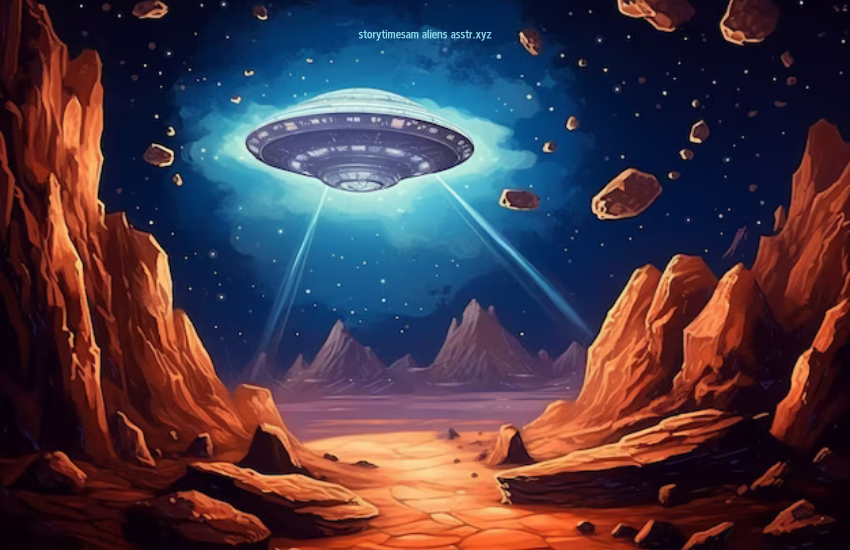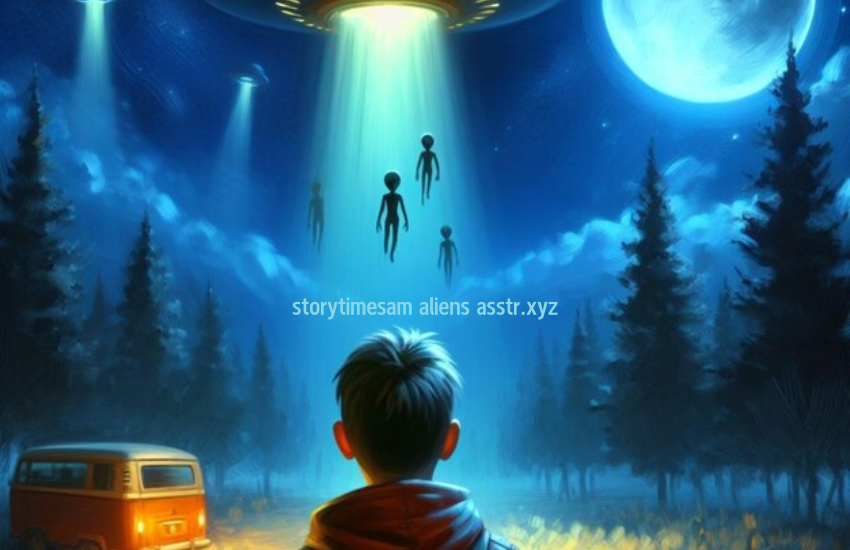Aliens, often depicted as otherworldly beings, have fascinated humanity for centuries. The term “storytimesam aliens asstr.xyz” refers to any life form originating from outside Earth. From ancient texts and folklore to modern scientific discourse, the concept of extraterrestrial life has evolved significantly. Historically, aliens were often mythological figures, represented as gods or celestial beings. In the modern era, they are commonly envisioned through the lens of science fiction and theoretical science.
Theories on Alien Life
Theories about alien life are as varied as they are intriguing. Scientific theories often focus on the possibilities of life existing in extreme environments, such as the subsurface oceans of Europa or the methane lakes on Titan. The Drake Equation, proposed by Frank Drake in 1961, attempts to estimate the number of active, communicative extraterrestrial civilizations in the Milky Way galaxy. Popular cultural theories include the belief in UFO sightings and the ancient astronaut hypothesis, which suggests that aliens have visited Earth in the distant past and influenced human civilization.
Historical Encounters
Historical accounts of alien encounters date back to ancient civilizations. The ancient Egyptians, Mayans, and other cultures left behind artifacts and texts that some interpret as evidence of alien contact. Medieval manuscripts also contain references to mysterious objects in the sky. The 20th century brought a surge of reported encounters, most famously the Roswell incident in 1947, where an alleged UFO crash sparked widespread speculation and conspiracy theories.

Modern Alien Encounters
Modern encounters with aliens are often associated with high-profile incidents and sightings. The Roswell incident remains one of the most discussed, with claims of government cover-ups and hidden evidence. Area 51, a highly classified U.S. Air Force facility, has become synonymous with alien conspiracy theories. In recent years, there has been a steady stream of UFO sightings and purported evidence, often captured on video and shared widely on the internet.
Government and Alien Disclosure
The role of governments in alien disclosure is a topic of intense debate. Many believe that governments possess extensive knowledge about extraterrestrial life and have systematically covered it up to avoid public panic. Declassified documents and testimonies from former government officials and military personnel have fueled these theories. Whistleblowers, such as Edward Snowden, have hinted at the existence of classified information regarding extraterrestrial life.
Alien Technology
Speculation about alien technology often blurs the line between science fiction and reality. Possible alien technologies include advanced propulsion systems, energy sources, and materials beyond our current understanding. Some theorists suggest that human technology, such as the microchip, was developed with knowledge obtained from reverse-engineering alien artifacts. While these claims are largely speculative, they continue to captivate public imagination.
Alien Species Theories
The diversity of alien species in theoretical discourse is vast. Common types include the Greys, small humanoid beings with large heads and eyes; Reptilians, reptile-like creatures often depicted as malevolent; and Nordics, tall, fair-skinned beings resembling Nordic humans. Biological and physiological theories about these species often revolve around their potential evolutionary paths and home planets.
Aliens in Popular Culture
Aliens have left an indelible mark on popular culture. They are central to countless movies, TV shows, books, and artworks. Iconic films like “E.T. the Extra-Terrestrial,” “Close Encounters of the Third Kind,” and the “Alien” franchise have shaped public perceptions of extraterrestrial beings. Literature, from H.G. Wells’ “The War of the Worlds” to modern sci-fi novels, explores various aspects of alien life and its implications.
Alien Abductions
Reports of alien abductions are a significant aspect of ufology. Famous cases like those of Betty and Barney Hill and Travis Walton have become part of the cultural narrative. Psychological explanations for these experiences range from sleep paralysis to vivid dreams, but many individuals stand by their accounts. Support groups and communities have formed to provide a space for abductees to share their experiences and find solidarity.
Communication with Aliens
Efforts to communicate with aliens have been ongoing for decades. The Search for Extraterrestrial Intelligence (SETI) uses radio telescopes to listen for signals from space, while Messaging Extraterrestrial Intelligence (METI) involves sending messages to potential alien civilizations. The challenge of overcoming language barriers and ensuring mutual understanding remains a significant hurdle.
The Search for Extraterrestrial Life
The quest to find extraterrestrial life has driven numerous space missions and technological advancements. The discovery of exoplanets in habitable zones has increased optimism about finding alien life. Missions to Mars, Europa, and other celestial bodies aim to uncover signs of past or present life. Technological advancements, such as the James Webb Space Telescope, promise to enhance our ability to detect extraterrestrial life.
The Impact of Alien Contact
The potential impact of alien contact on society is profound. It could revolutionize science, technology, and our understanding of the universe. However, it also raises concerns about societal disruption, religious and philosophical challenges, and potential risks. The benefits of advanced knowledge and technology must be weighed against the risks of unintended consequences.

Aliens and Religion
Religion and the concept of aliens intersect in complex ways. Many religious texts contain references that some interpret as descriptions of extraterrestrial beings. Modern religious interpretations vary, with some viewing aliens as part of God’s creation, while others see them as a challenge to traditional beliefs. This intersection continues to be a topic of debate and controversy.
Future of Alien Research
The future of alien research looks promising, with several ambitious missions and emerging technologies on the horizon. Projects like NASA’s Artemis program aim to explore the Moon and Mars in greater detail. Advancements in artificial intelligence and machine learning are expected to play a crucial role in analyzing vast amounts of data for signs of extraterrestrial life. Predictions and expectations for future discoveries remain optimistic.
Conclusion
The fascination with aliens and the search for extraterrestrial life is a journey that spans history, science, and imagination. While definitive evidence of alien life remains elusive, the pursuit continues to inspire and challenge humanity. As we advance technologically and explore further into the cosmos, the possibility of making contact with extraterrestrial beings becomes increasingly plausible. The future of our intergalactic odyssey holds endless potential and promise.

